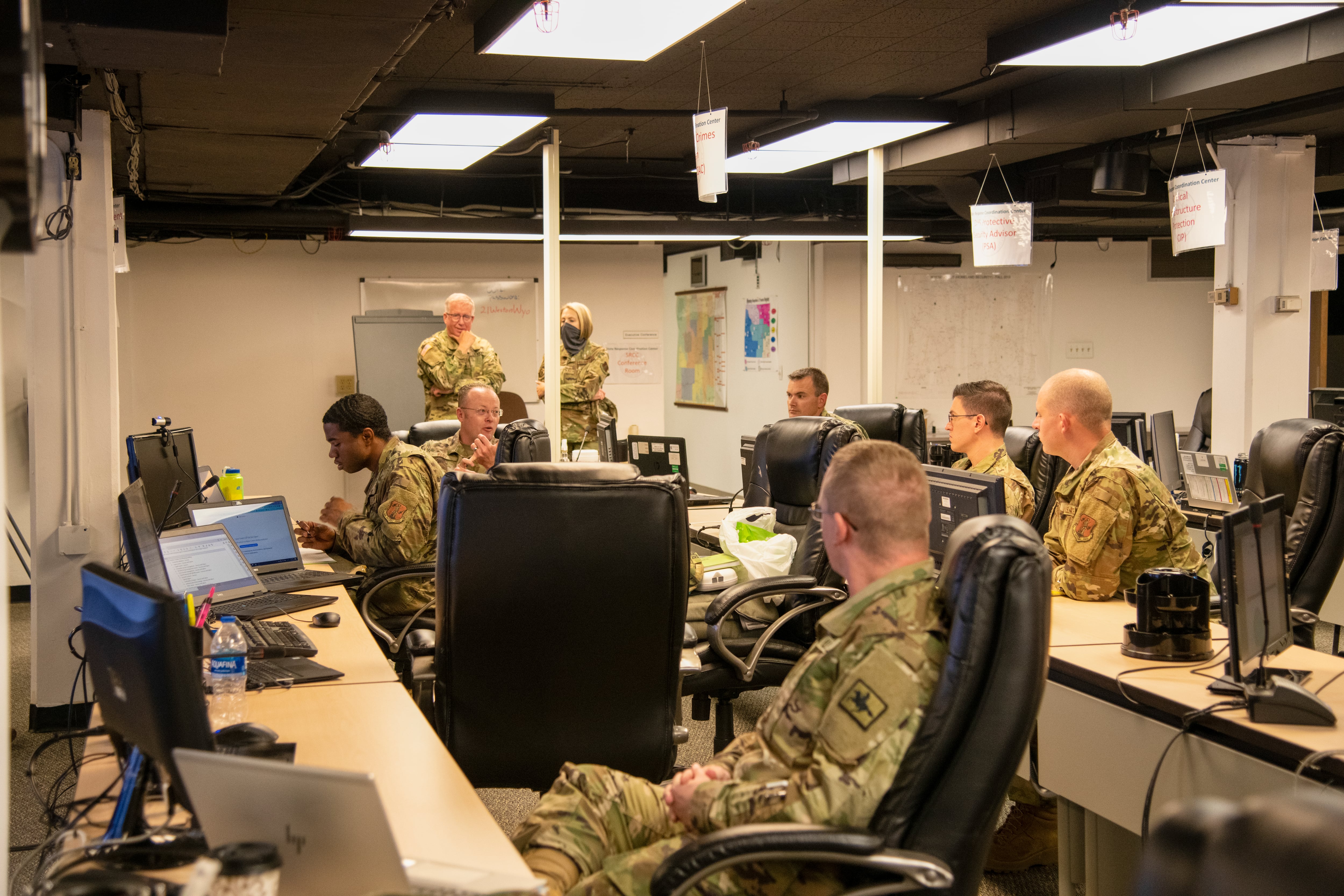BELCAMP, Maryland — The U.S. Army will soon make “information advantage” an official term of doctrine, elevating the idea and setting conditions for how the Army will fight to win in the information space.
The term began to gain steam following the transition of Army Cyber Command from solely cyberspace operations to more broad information warfare duties, encompassing electromagnetic spectrum operations, as well as information operations and influence.
Recently, top officials from around the Army — including representatives from Training and Doctrine Command, the Combined Arms Center, Army Cyber Command and Army Futures Command — gathered to discuss the term’s meaning
“The purpose of doing that was to determine how we will codify in doctrine, link its relationships to complementary ideas such as decision dominance on a host of supporting capabilities that will assist a commander’s ability to compel, to persuade or to deter enemy decisions and actions,” Maj. Gen. Neil Hersey, commander of the Cyber Center of Excellence, said Tuesday at the Cyber Electromagnetic Activity conference, hosted by the Association of Old Crows. “A key outcome of the forum was an agreement on what information advantage is.”
Hersey noted that momentum has been building around the term for some time, but to date, it is not defined in doctrine. Simply put, he said, a force will use all military capabilities to improve situational understanding and decision-making.
Last fall, Lt. Gen. Stephen Fogarty, commander of Army Cyber Command, said operations in recent years helped fill out the idea of information advantage. “Almost every operation we’re conducting, whether it’s defensive or offensive, what we’ve found is when we have looked at it much more holistically than just kind of a cyber piece of this, what we’ve been able to do is amplify the effects of that operation,” he said at the time.
The Army has articulated its intent to transition to a multidomain force that tries to deter and defeat sophisticated adversaries by creating new units, such as multidomain task forces, and by changing the way it fights.
Information advantage fits into this larger vision for the Army, Hersey said, given that information environment capabilities are central in competition, which the Army and wider U.S. government find themselves in constantly.
As the term moves toward doctrine, the idea is to better integrate disparate capabilities for a commander. Commanders can no longer walk through a tactical operations center and ask a cyber person, intelligence person and electromagnetic spectrum person to provide relevant information. They need an integrated picture that ingests all that data in an interconnected way and provides that commander the necessary information to make the best decisions to win.
Hersey describes five pillars of information advantage: enable decision-making, protect friendly information, inform and educate domestic audiences, inform and influence international audiences, and conduct information warfare.
The staff has to bring those five tasks together so the commander can have a common operational picture.
“How do I meter those, basically the five different efforts that are interrelated in terms of protecting information, enabling out at the decision-making or information warfare and do it at scale and do it at echelon?” Hersey said. “That is being worked into doctrine … we must address how a commander achieves decision dominance and is able to sense, understand, decide, act and assess faster and more effectively than our adversaries.”
Minting the term in official doctrine will filter into the Army’s official field manual, 3-12, for how commanders will seek to gain an advantage. The Army in 2017 released the first such field manual to integrate cyberspace and the electromagnetic spectrum under the banner of an integrated information package. Given how quickly the information domain evolves, officials said the Army will likely have to update the manual every 18 months or so.
Mark Pomerleau is a reporter for C4ISRNET, covering information warfare and cyberspace.





